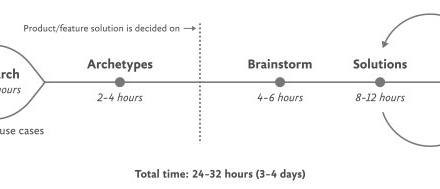We’ve got you covered.
Not all of us have lawns to mow, but everyone can reap the benefits of the lawn mower exercise. This basic move—which is done by pulling a weight or resistance band diagonally across your body—is an excellent way to build strength in your shoulders and back.
Because your back and shoulders are some of the most used muscles (and therefore the most injured), it’s super important to strengthen them so you’re easily able to do everyday tasks (hello, carrying and putting away those heavy groceries!) without getting hurt.
Perhaps the best part? The lawn mower exercise doesn’t require much space or expensive equipment, and it’s adaptable to all fitness levels. TL;DR: It’s a great addition to at-home upper-body workout—and who doesn’t love that?
We reached out to functional fitness expert Noelle McKenzie, CPT, a certified personal trainer and co-founder of Leading Edge, for advice on how to do the exercise properly, why it’s beneficial, and more.
What is the lawn mower exercise?
The lawn mower exercise (sometimes called a lawn mower row) is a strength exercise designed to work your back and shoulder muscles. You can do it with a resistance band or dumbbell (check out these adjustable dumbbells!), depending on what equipment you have available.
The exercise is done by pulling the weight across your body in a diagonal motion—much like the motion of starting a lawn mower.
This is a great exercise for functional fitness because it improves your strength for lifting heavy things in your everyday life. Strengthening your shoulders and back can also help to improve posture and alleviate back pain caused by weak muscles or muscle imbalances.
How to do the lawn mower exercise with perfect form
- Start standing with your feet together, holding a dumbbell in your right hand with your palm facing in toward your body.
- Step your right foot about 6 to 12 inches back, keeping it straight. Lift your right heel off the floor, balancing on the toes of your right foot. Your left leg should be bent in front of you.
- Lean your torso forward at a 45-degree angle to the floor.
- Let your right arm hang down toward the floor. You can rest your left arm on your left thigh for stability if needed.
- Keeping your back flat and core tight, retract your shoulder blades to pull your right shoulder down and back away from your neck.
- From here, pull the dumbbell toward your right hip by bending your elbow and squeezing your shoulder blades together to keep your scapula retracted.
- Your right elbow should move past your torso, and you should allow your T-spine (the middle section of your spine) to rotate slightly.
- Slowly return to the starting position, allowing the weight to pull your arm back down toward the floor in an extended position.
- Finish your set and repeat on the opposite side.
Lawn mower exercise muscles worked
The specific back and shoulder muscles the lawn mower exercise works include the following, according to McKenzie:
- Latissimus dorsi (middle and lower back)
- Rhomboids (upper back)
- Trapezius (neck, shoulders, and upper back)
- Rear deltoids (shoulders)
- Biceps (upper arm)
- Forearms (lower arm)
- Obliques (the sides of your trunk)
- Transverse abdominis (deepest abdominal muscle)
Benefits of the lawn mower exercise
The lawn mower exercise has the obvious benefits of improving strength and building muscle in your back and shoulders, but that’s not all it has to offer.
“Because it requires the twisting of your body, it’s great for training rotational movements, which work on opening up your T-spine,” McKenzie says.
It’s also an excellent exercise for functional fitness, aka the fitness you require for everyday activities, and improving your posture.
McKenzie also notes that the lawn mower exercise helps improve stability and muscle imbalances by training one side of your body at a time. This can also help relieve pain caused by muscle weakness, especially if said weakness is more prevalent on one side of your body as this can cause you to compensate on the opposite side.
Lawn mower exercise variations
While the lawn mower exercise is great for a lot of people, it’s not one-’cise-fits-all (see what we did there?). Here are a few variations to help you find the best option for you.
1. Banded bent-over row with bilateral stance
Best for: those who struggle with balance
- Start by standing with your feet shoulder-width apart.
- Place one end of a resistance band underneath both feet and grab the other end with both hands.
- Lean your torso forward at a 45-degree angle to the floor.
- Retract your scapula by pulling your shoulder blades down and back away from your neck.
- While keeping your back flat and parallel with the floor and your core engaged, drive both elbows up past your hips, squeezing your shoulder blades together.
- Slowly return back to the starting position, allowing your arms to fully extend toward the floor.
- Repeat.
If your balance allows, you can also do the standard, split-stance lawn mower exercise with a resistance band.
2. Bent-over dumbbell row on bench
Best for: those who lack T-spine mobility
- Set an adjustable weight bench to a flat position.
- Stand with the weight bench to your left, holding a dumbbell in your right hand, palms facing in toward your body.
- Place your left hand and left knee on the bench, with your right foot firmly planted on the ground.
- Flatten your back, brace your core, then retract your shoulder blades to pull your right shoulder down and away from your neck.
- From here, pull the dumbbell toward your right hip by bending your right elbow and squeezing your shoulder blades together to keep your scapula retracted.
- Your right elbow should move past your torso while keeping your shoulders square with the bench.
- Slowly return to the starting position, allowing your right arm to fully extend back toward the floor.
- Finish your set and repeat on the opposite side.
3. Seated row with band
Best for: those who need to—or prefer to—sit
- Start sitting on the floor with your legs extended straight out in front of you.
- Wrap the band around the balls of both feet and grab either end of the band in each hand.
- Retract your scapula by pulling your shoulder blades down and back away from your neck.
- With your chest open and core tight, bend your elbows and pull them back toward your hips. Make sure to squeeze your shoulder blades together to keep your scapula retracted.
- Slowly return to the starting position by straightening your elbows.
- Repeat.
If you’re still not sure which variation is the right option for you, McKenzie has a few more suggestions to help you narrow it down:
- The banded row variations are great for people who want to work on power and speed, such as athletes.
- The bent-over dumbbell row using a bench is a great option for people looking to maximize muscle growth.
- For those coming off a shoulder or back injury, start with the seated banded variation because there’s minimal resistance at the start of the pull.
- For older adults or those who are more sedentary, it may be best to progress up toward the rotational lawn mower variation to regain more mobility through your T-spine, which is something people tend to lose as they age and become less active. This mobility is key to maintaining a healthy functioning body.
Lawn mower exercise safety tips
Although the lawn mower is pretty safe as far as at-home exercises go, there’s always the possibility of injury if you aren’t careful. Here are a few tips from McKenzie to keep you out of harm’s way when doing the lawn mower exercise:
- Always maintain proper form to make sure you’re engaging the right muscles and not over-compensating somewhere. If ever your form breaks down, it’s an indicator that you either need to drop down in load, do fewer reps, or modify the exercise to one of the variations provided above. If you’re just starting out, use a mirror so you can assess that your form is correct.
- Always check your equipment to ensure it’s secure. When using the exercise bench, make sure it’s locked in the position you have it set to. Make sure your bands are anchored well, and when choosing a weight, start low and move up—it’s always best to start below your max to ensure you’re using a weight you can handle safely.
- Prep your body for exercise with a dynamic warm-up with moves like banded shoulder openers, wall angels, and spinal controlled articular rotations (CARs).
- Assess for pain before you begin, and be aware of your body throughout the move. If you ever experience pain or discomfort, make sure to modify as needed or stop completely. You should never push through pain as this can lead to injury.
Recommended Story For You :

The alpine secret for healthy weight loss

The Most Potent Fast-Acting Formula For Incinerating Stubborn Fat

Real Cortexi Users Real Life‑Changing Results

This Cold Drink Might Trigger Your Prostate

Red Boost is a powerful new formula for boosting male sexual health.

Everything you eat or drink eventually reaches your liver for processing.

Brand New Probiotics Specially Designed For The Health Of Your Teeth And Gums

Empowering You to Take Control of Your Blood Sugar Health!

Scientists Finally Discover the Root Cause of Belly Fat and Unexplained Weight Gain






